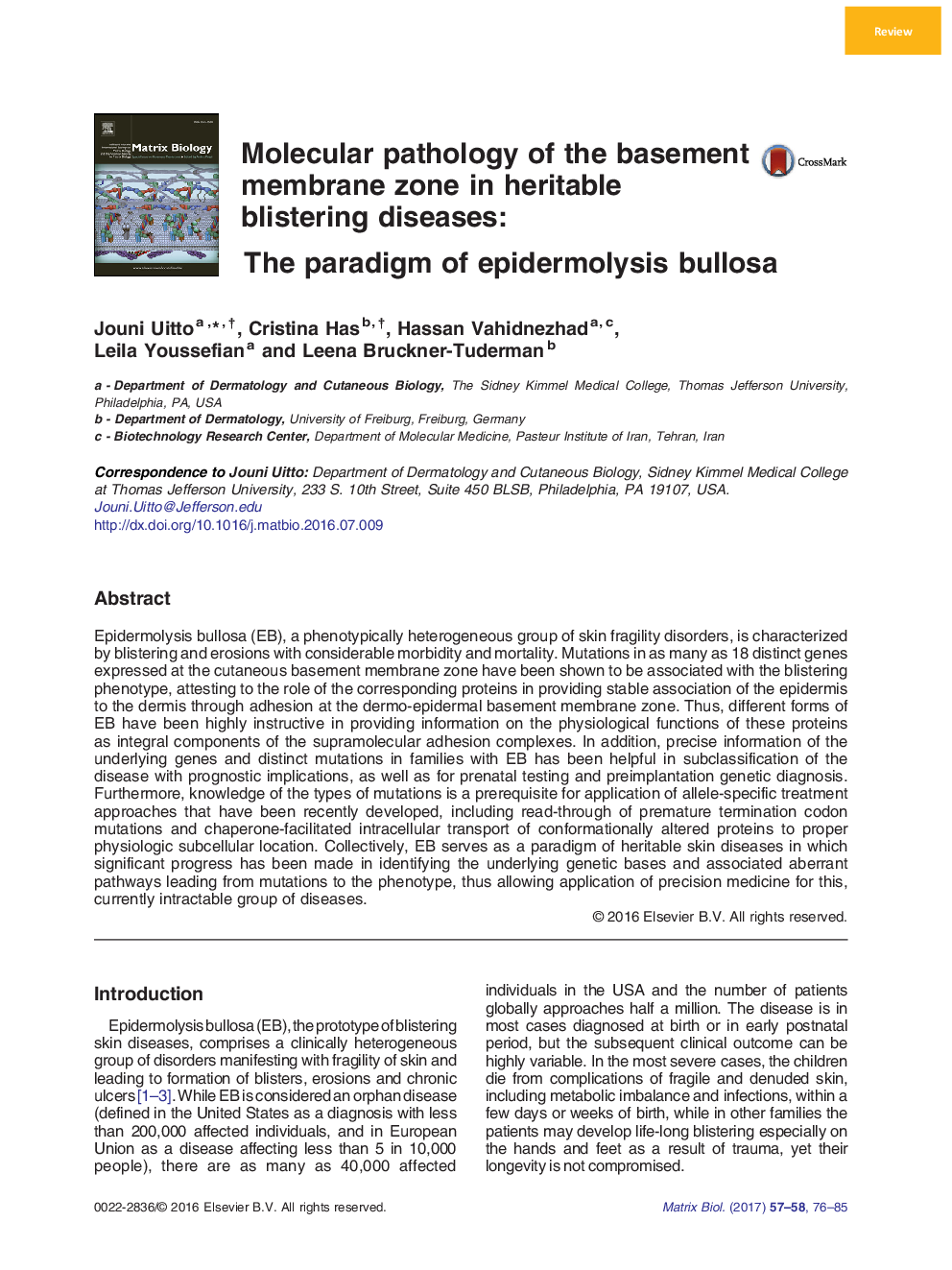| کد مقاله | کد نشریه | سال انتشار | مقاله انگلیسی | نسخه تمام متن |
|---|---|---|---|---|
| 5528521 | 1548003 | 2017 | 10 صفحه PDF | دانلود رایگان |

- BMZ comprises a complex network of interacting matrix molecules responsible for stable adhesion of epidermis to the underlying dermis
- Mutations in the BMZ genes can result in fragility of the skin, which as a result of minor trauma leads to blistering and erosions
- The prototype of heritable skin fragility disorders is epidermolysis bullosa (EB), associated with mutations in as many as 18 distinct genes
- One of the most severe forms of EB is the dystrophic variant, caused by mutations in COL7A1, with considerable morbidity and mortality
- The precise knowledge of mutations forms the basis for genetic counseling, prenatal testing and preimplantation genetic diagnosis, and allows development or allele-specific treatment approaches
Epidermolysis bullosa (EB), a phenotypically heterogeneous group of skin fragility disorders, is characterized by blistering and erosions with considerable morbidity and mortality. Mutations in as many as 18 distinct genes expressed at the cutaneous basement membrane zone have been shown to be associated with the blistering phenotype, attesting to the role of the corresponding proteins in providing stable association of the epidermis to the dermis through adhesion at the dermo-epidermal basement membrane zone. Thus, different forms of EB have been highly instructive in providing information on the physiological functions of these proteins as integral components of the supramolecular adhesion complexes. In addition, precise information of the underlying genes and distinct mutations in families with EB has been helpful in subclassification of the disease with prognostic implications, as well as for prenatal testing and preimplantation genetic diagnosis. Furthermore, knowledge of the types of mutations is a prerequisite for application of allele-specific treatment approaches that have been recently developed, including read-through of premature termination codon mutations and chaperone-facilitated intracellular transport of conformationally altered proteins to proper physiologic subcellular location. Collectively, EB serves as a paradigm of heritable skin diseases in which significant progress has been made in identifying the underlying genetic bases and associated aberrant pathways leading from mutations to the phenotype, thus allowing application of precision medicine for this, currently intractable group of diseases.
Journal: Matrix Biology - Volumes 57â58, January 2017, Pages 76-85